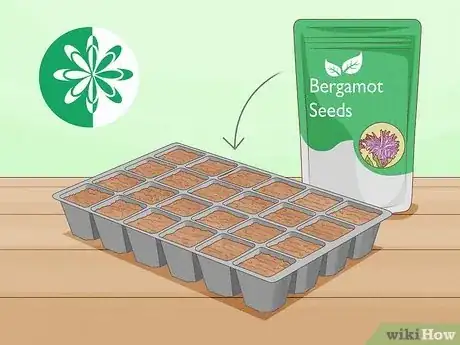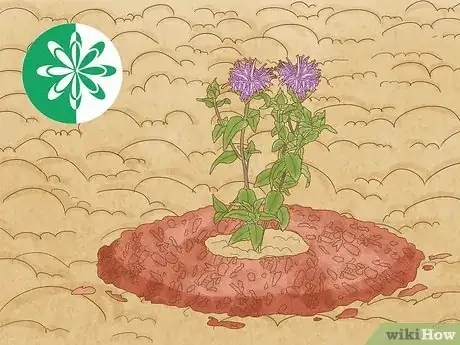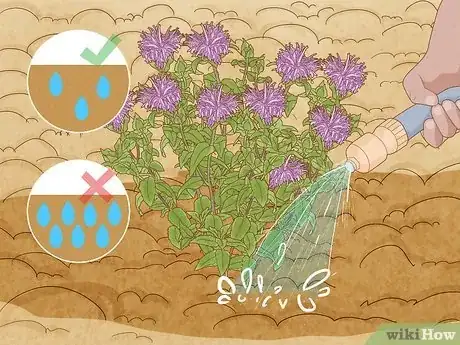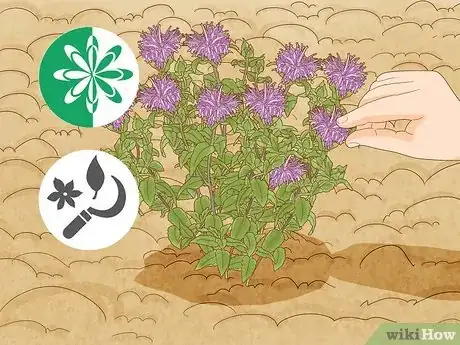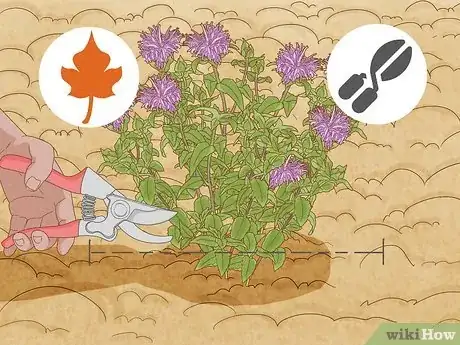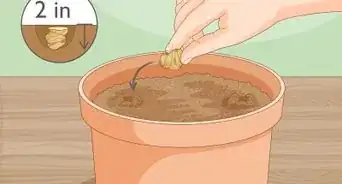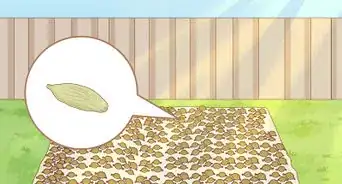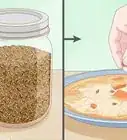wikiHow is a “wiki,” similar to Wikipedia, which means that many of our articles are co-written by multiple authors. To create this article, volunteer authors worked to edit and improve it over time.
This article has been viewed 52,857 times.
Learn more...
Bergamot (Monarda didyma) is a North American native plant with a scent of oranges. The leaves can be used sparingly in salads and fruit drinks, while the dried leaves or fresh leaves can be made into a tea.
Steps
-
1Purchase bergamot seeds. There are several types of bergamot, with the most common one being the wild bergamot (M. fistula) and lemon bergamot (M. citriodora). Check your local nursery or look online. Seeds will need to be raised in trays before transferring to the garden space.
- Alternatively, the plant can be grown from root divisions taken in spring or autumn/fall, or from stem cuttings taken in the summer. Growing from seeds is slow, so you may prefer this method.
- Once planted, bergamot will seed readily but it should be subject to regular division, to remove the dead center. Aim for dividing every three years.
-
2Decide where to grow it. Bergamot likes to grow in a sunny position and the soil needs to be rich and well-drained. It will tolerate a little shade.Advertisement
-
3
-
4Thin out the seedlings or transplant them to 18" apart. They are vigorous growers and will spread a lot.
-
5Mulch. Add mulch to the herb in spring.
-
6Water on a regular basis to keep moist. Don't over-water though, as it can be prone to mildew.
-
7Harvest. Collect leaves in spring or summer. The flowers can be picked when opened.
- Only scatter leaves or flowers sparingly in salads; the flavor is powerful.
- If making tea, infuse or simmer the leaves for 10 minutes in an enamel or glass saucepan. If you want to mimic Earl Grey tea, add the leaves to China tea.
-
8Prune. Cut down to ground level in autumn/fall. Mulch it well and expect its return next spring.
Community Q&A
-
QuestionNot fall yet, but plant is dying. Can I cut to ground now?
 NinoxTop AnswererYou can cut it now if the plant is dying very fast, but if you can wait until fall it's better for the plant.
NinoxTop AnswererYou can cut it now if the plant is dying very fast, but if you can wait until fall it's better for the plant. -
QuestionIf I'm planting indoors and eventually moving them outside, can I sow the seeds now in mid-October?
 NinoxTop AnswererIf you want to sow inside and then move the sprouts outside, you have to wait until March.
NinoxTop AnswererIf you want to sow inside and then move the sprouts outside, you have to wait until March.
Things You'll Need
- Bergamot seeds, seedlings, or cuttings/divisions
- Digging tools
- Suitable garden space
- Seedling tray if raising from seed
References
- ↑ http://www.gardenguides.com/69028-grow-bergamot.html
- ↑ https://plants.ces.ncsu.edu/plants/monarda-didyma/
- ↑ Murdoch Books, Growing Herbs, p. 172, (2006), ISBN 978-1-74045-870-2 – research source
- Caroline Foley, Jill Nice, and Marcus A Webb, New Herb Bible, p. 81, (2001), ISBN 1-875169-92-X – research source
- http://www.gardenguides.com/69028-grow-bergamot.html – research source
About This Article
To grow bergamot, plant the seeds in early spring. Start them off in a seed tray and cover them with a thin layer of soil. Place a heat source, such as a heating pad, beneath the tray. Once the seedlings sprout, transfer them to a sunny spot outside with rich, well-draining soil. Plant the seedlings at least 18 inches (46 cm) apart. Put mulch around the plants in spring and water them enough to keep the soil moist, but not soggy. Harvest the leaves in spring and summer, and the flowers whenever they open. Prune them down to ground level in autumn and add a new layer of mulch. Your bergamot plants will grow back in spring.


